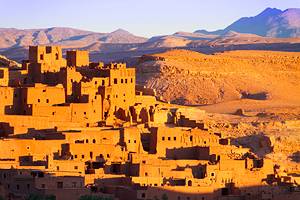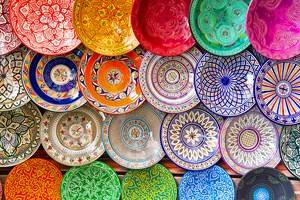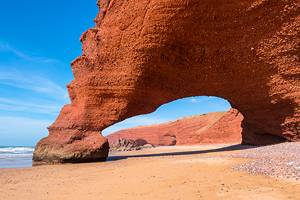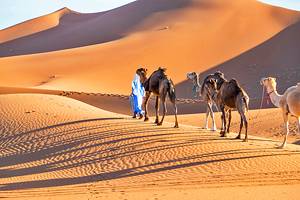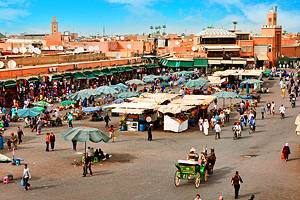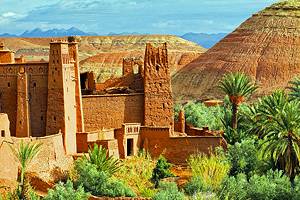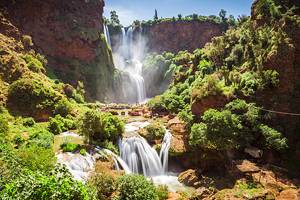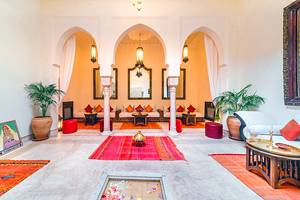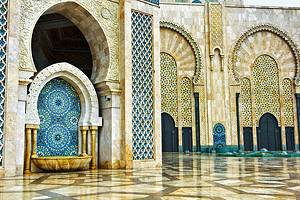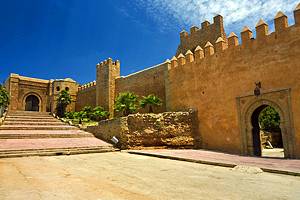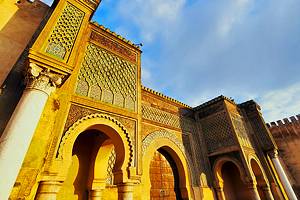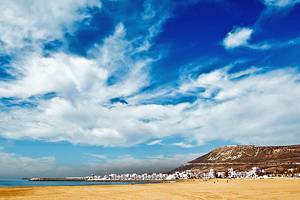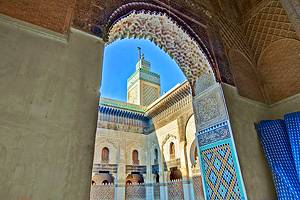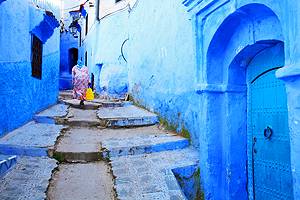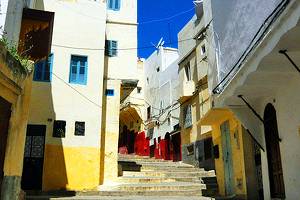Tourist Attractions in Morocco
Morocco's top tourist attractions range from grand Roman ruins to orange-toned mud-brick kasbah architecture, which makes it one of North Africa's most interesting historic destinations.
While the souqs of Marrakesh and Fes, crammed to the brim with local artisan crafts, have made it one of the world's best places to visit for shoppers, head out of the cities, and a Moroccan trip becomes an adventure into some of the region's most dramatic scenery.
The craggy heights of the Atlas Mountains cut through the center of Morocco and are prime territory for trekking and other outdoor activities, while for those willing to make the long journey out east, sleeping amid the towering sand dunes of the Sahara remains one of the country's top things to do.
Morocco is also a journey into a timeless, tranquil world of cute coastal villages, colorful-painted towns that cling to hillsides, and remote mountain outposts defended by fortress walls.
This fascinating country is a merging of the African and Arab worlds and is steeped in age-old customs. It's no wonder Morocco has been feted by artists and writers for decades, and continues to enchant all who visit.
Discover the best places to visit in this captivating country with our list of the top tourist attractions in Morocco.
Marrakesh Medina
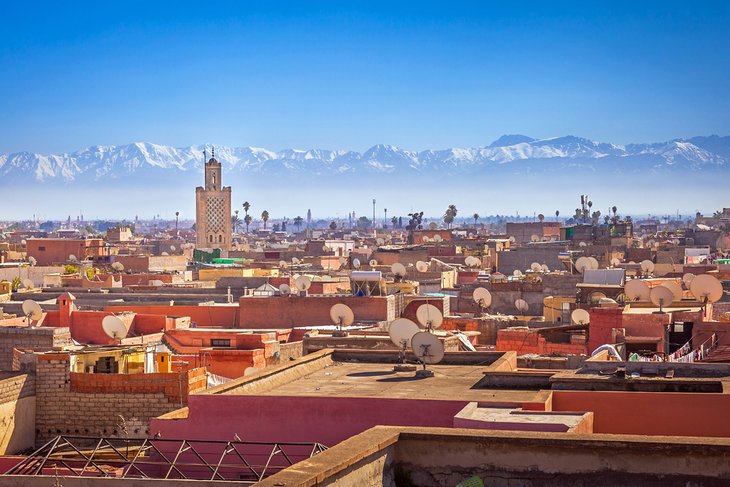
The bustling and vibrant buzz of Marrakesh medina sums up Morocco for many visitors and is a major tourist attraction.
The old city is entered from the vast plaza of Djemma el-fna Square where, it seems, half the city converges throughout the day and into the evening to hang out with the stall vendors, traditional musicians, snake charmers, and random acrobats.
The plaza is at its most vibrant after dark, when entertainers flood into the square and the restaurant stalls (which set up at dusk daily) are selling their grilled meat meals. Don't miss spending at least one of your Marrakesh evenings here.
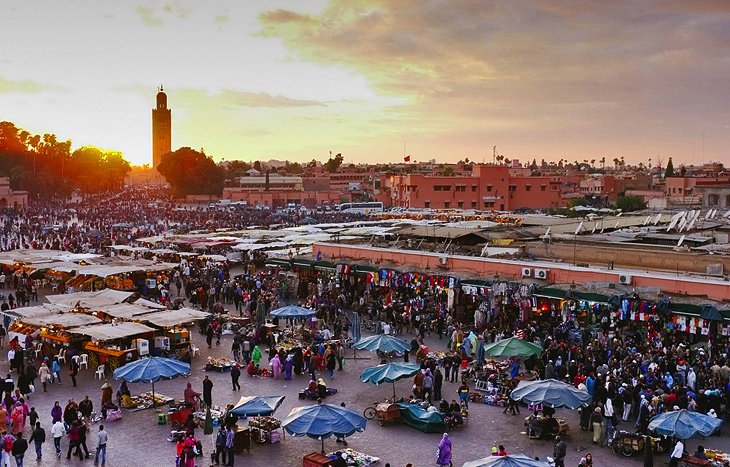
Once inside the medina itself, you enter a world of maze-like alleyways and shopkeeper hustle. It's an experience full of colorful and noisy local life, and not to be missed on your Moroccan sightseeing trails.
Although the medina was affected by Morocco's devastating September 2023 earthquake, and a few of the larger government-run historic tourist attractions have been closed to visitors for an indefinite period while they await full inspections for damage, the smaller privately run museums are all fully operational and open. As are all the souqs, cafés, restaurants, and other tourist facilities.
Read More: Attractions & Places to Visit in Marrakesh
Chefchaouen
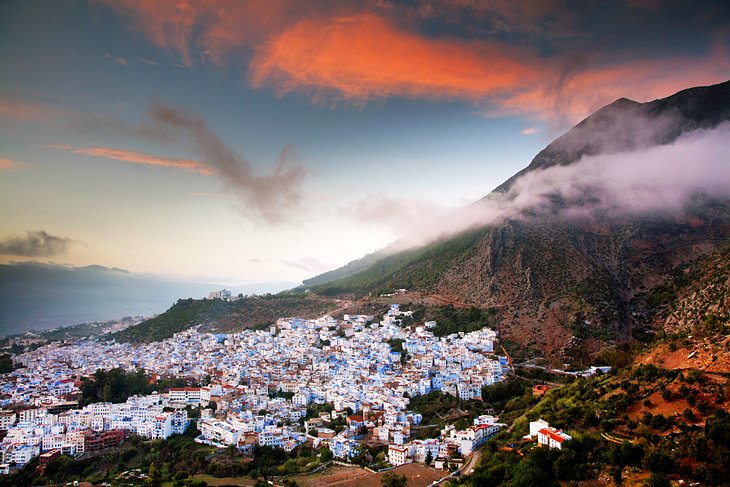
Sitting snug amid the lush Rif Mountains, Chefchaouen is a labyrinth hill town of blue-on-blue buildings that has an incredibly photogenic glow.
There isn't much actual sightseeing to be done, and that's one of the town's main attractions.
A visit here is simply about wandering the medina alleys and lapping up all that colorful architecture.
It's a peaceful, easygoing town and a great place to recharge for a while if you've been spending a lot of time amid the cities of Fes and Marrakesh beforehand.
Keen shoppers should beeline here for rugs and blankets, woven in the Riffian style using bright, primary colors. Begin any shopping expedition in Chefchaouen at Place el-Majzen in the medina.
This is also one of Morocco's main hiking and trekking destinations and a starting point and organization center for Rif Mountains walks. The town sits on the doorstep of both Talassemtane National Park and Bouhachem Nature Reserve.
If you want to sample some of the best scenery northern Morocco can summon, trek the Chefchaouen to Bab Taza trail. This four or five-day trek in Talassemtane National Park winds through lush forests of cork oak, pine, and juniper, with views in places that sweep all the way from the slopes, down to the Mediterranean. If you can, come in spring when wildflowers burst into life.
Erg Chebbi's Dunes
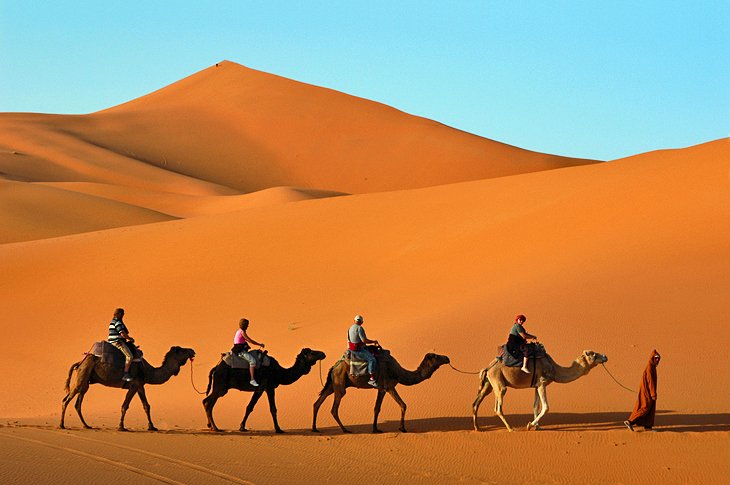
To see Morocco's Sahara dune fields, you need to head east of the High Atlas spine to the far eastern desert region that sits near the border with Algeria.
The most popular destination for grand and rippling sand dunes is Erg Chebbi.
This is prime territory for dune surfing, four-wheel-drive dune-bashing, and sunrise and sunset camel trekking, usually combined with an overnight stay in a tented desert camp.
The desert camps have been moved away, out of the dune field itself, to help preserve the natural beauty of the dunes and instead sit on the edge with views of the sand dune splendor.
Experiencing the star-filled Sahara sky at night while bedding down at a desert camp is worthy enough of the long journey it takes to get here, but you won't want to miss camel trekking across the dune field and, for the more active, exploring some of the smaller dunes on foot.
Many travelers book a desert experience package, which includes return transport (usually from Fes or Marrakesh) and an overnight desert camp stay, but you can also independently travel to Merzouga (the village beside the Erg Chebbi dune field) and organize activities once there.
Whether you're planning to visit Erg Chebbi by organized tour or independently, make sure you understand the vast distances involved in getting here.
Erg Chebbi is 551 kilometers east of Marrakesh and 469 kilometers southeast of Fes. A one-night trip to Erg Chebbi from either city is mostly consumed by traveling there and back.
It is a much better idea to throw some wiggle room into your itinerary and either break up the journey with a night or two visiting destinations along the way, or - if you're a desert fan - spending two nights in the Erg Chebbi area.
Fes el Bali
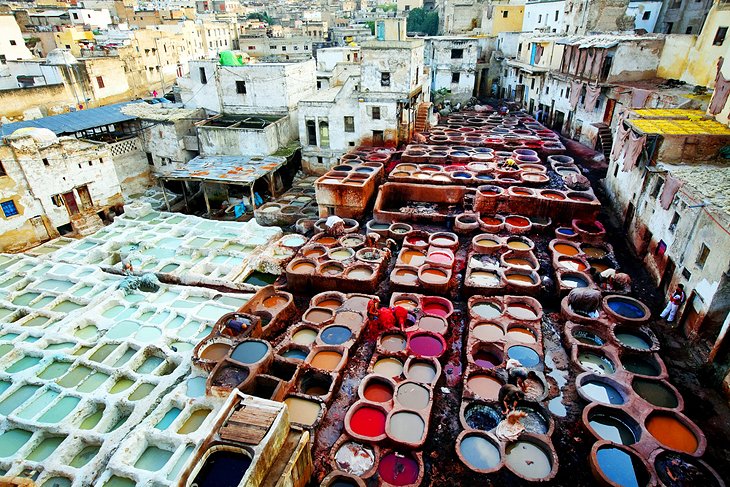
Along with Marrakesh, Fes is Morocco's other big cultural destination.
Compared to its sister Imperial City to the south, Fes is much less gentrified. The medina here (called Fes el Bali) is a maze of skinny, back alleyways where it's near impossible to not get lost.
Amid the souqs area, you'll find the tanneries, where the huge vats of colored dyes are one of the city's iconic sights.
As well as the city's artisan heritage, with souq streets full to the brim with traditional handicrafts, and the scatter of palaces and monuments hidden amid the twisting streets, the main attraction of Fes el Bali is simply heading out on aimless wanders amid the lanes.
Read More: Attractions & Things to Do in Fes
Ait Ben Haddou

This golden-stoned adobe ksar (fortified village) thrusts dramatically out of the earth amid scenery that wows all who visit.
It's a fairy-tale place, and unsurprisingly the orange-hued turrets and curvy lanes inside have become a favorite film location for Hollywood due to the surreal beauty of the place.
You can even sleep within the ksar if you want the full Ait Ben Haddou experience, though those who like their creature comforts should be aware that there's no electricity within the mud brick walled building itself.
Although the High Atlas region west of Ait Ben Haddou suffered the worst brunt of Morocco's devastating 2023 earthquake (and Ouarzazate, just to the east of Ait Ben Haddou, also suffered damage), this ancient ksar was only minimally affected and remains one of the High Atlas' most beautiful sights.
Try to come in the early morning or later in the afternoon, as the tour bus crowds on day trips from Marrakesh descend from around 10am to 2pm.
Essaouira
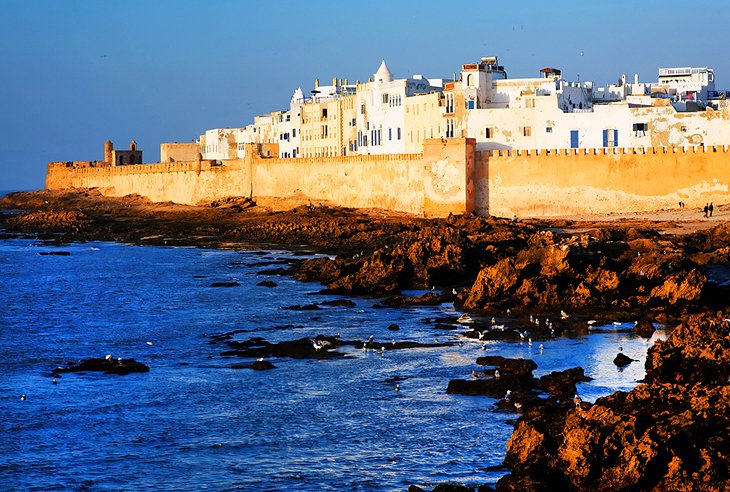
Morocco's most charming seaside town is laid-back Essaouira, which became one of the country's major hippie hangouts during the 1970s. Today a hint of this bohemian past hangs on, and the town is one of Morocco's artistic centers, with a thriving local art scene.
For visitors, Essaouira's seafront medina, encased within fortified walls, is the main attraction. Its twisty lanes are home to tiny art galleries, boutiques, and a bustling contemporary café and restaurant scene, as well as traditional souq shopping.
For those seeking more active sightseeing, there are also great walks along the beach to outlying villages, and surfing along the beach.
Volubilis
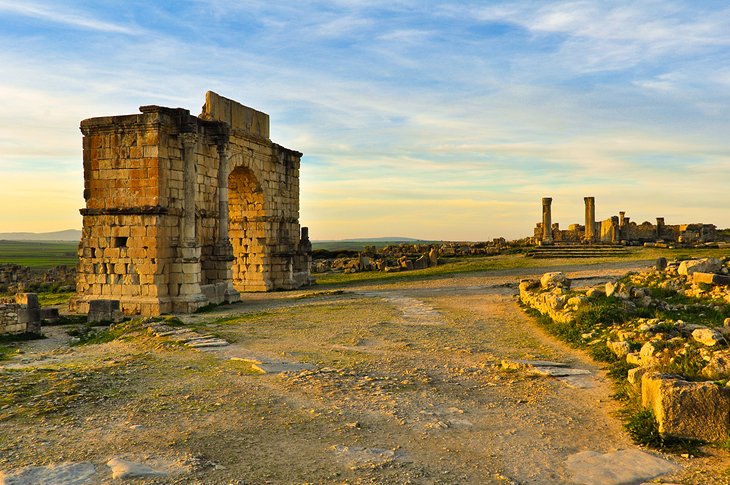
Morocco's number one Roman-era ruin, and its most famous historic site, is a feast for history lovers.
This rambling site is packed full of tumbled columns and temple remnants, standing as reminders that even the greatest empires eventually crumble. The major highlight here, though, is the clutch of intricate mosaic floors amid the ruins, which have been left in situ where they were unearthed.
The hilltop location allows the ruins to lord over the surrounding countryside, adding to the romantic ambience of lost glory.
Head up through the ruins to the Capitol and Forum for excellent panoramic views over the site and surrounding countryside.
Volubilis can easily be visited as a day trip from either Meknes or Fes.
Dades Valley
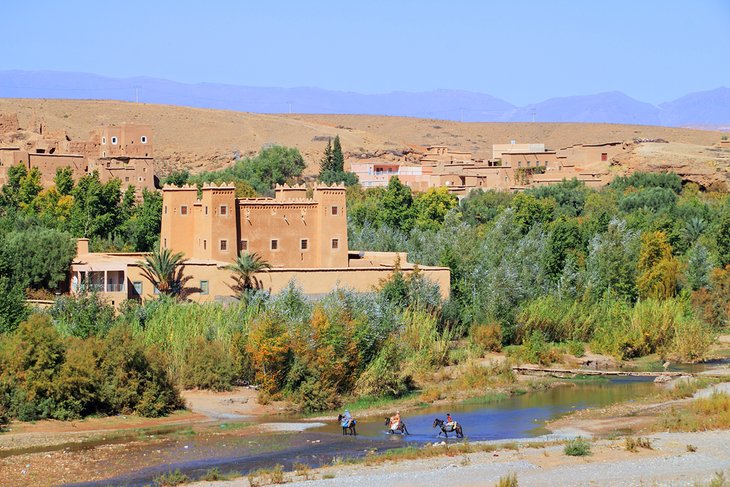
Hikers, trekkers, and general nature lovers shouldn't miss a journey into the Dades Valley, one of the High Atlas region's most picturesque spots.
With the snow-capped peaks of the High Atlas in the distance, the slow-paced rural life here is the perfect antidote for those who have been getting frazzled nerves amid the souqs of Marrakesh and Fes.
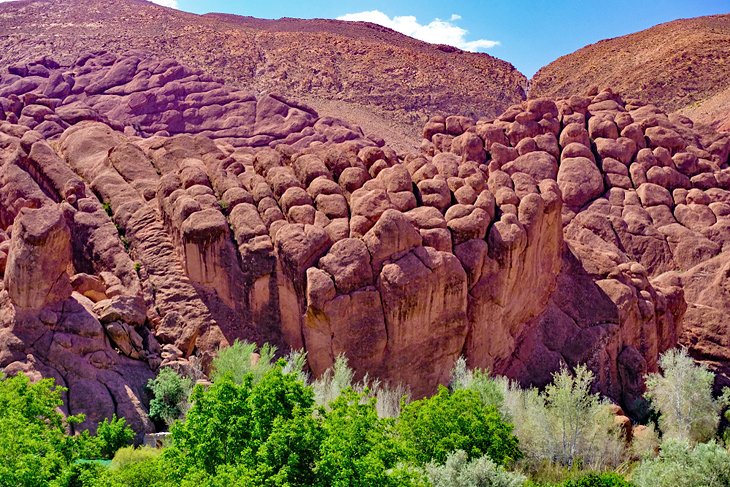
The tiny villages of the valley, sandwiched between high, orange-hued cliffs, are surrounded by orchards and farming fields. It's particularly photogenic during spring, when the fruit trees are in blossom.
Two of the valley's most famous sights are the Ait Youl Kasbah and the landscape of the smaller Tamlalt Valley, within the Dades Valley, with the Ait Arbi Kasbah backed by red cliffs.
Although many visitors come to the valley as a day trip, or as a stop-off on a journey further east, the best way to experience it is to stay overnight and spend some time here to take one of the plentiful day walk options in the area.
Erg Chigiga
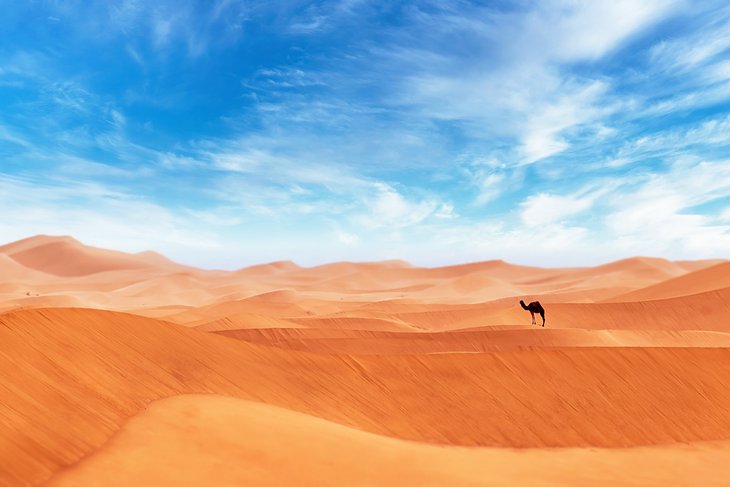
Covering around 40 kilometers, the Erg Chigiga dune field is the largest in Morocco.
Due to being farther southeast than the more famous Erg Chebbi, and hence less accessible on a short Morocco trip, this vast sand sea of mammoth Saharan dunes attracts fewer crowds.
The major base for Erg Chigiga excursions is the oasis town of M'Hamid from where you can head out into the desert on 4WD tours and multi-day camel treks to overnight amid the dunes. Be aware that M'Hamid is still around 55 kilometers away from the Erg Chigiga dune field, so to reach it in one day from town, you'll need to take a 4WD tour.
There are plenty of smaller dunes surrounding M'Hamid itself, which short sunrise or sunset camel treks head to.
Bab al-Mansour in Meknes
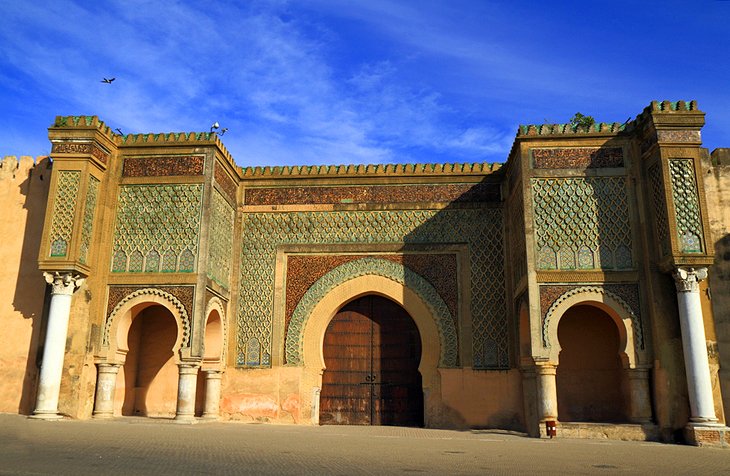
This mammoth gateway, which guards the entrance to Meknes' Imperial City district leading from Meknes medina, is noted for its intricate decoration.
Meant as a monumental reminder of the sultan's might, the Bab al-Mansour is a magnificent relic of Meknes' glorious era as capital of Morocco. It's widely regarded as Morocco's grandest and best preserved gateway.
Come in the late afternoon to photograph the gate in the soft light, then wander through Meknes' small maze of a medina, which is a much more laid-back affair than the medina of nearby Fes.
Meknes can easily be visited as a day trip from Fes, but it also is a destination in its own right, and it's a good stop on any northern Morocco itinerary.
Rif Mountains
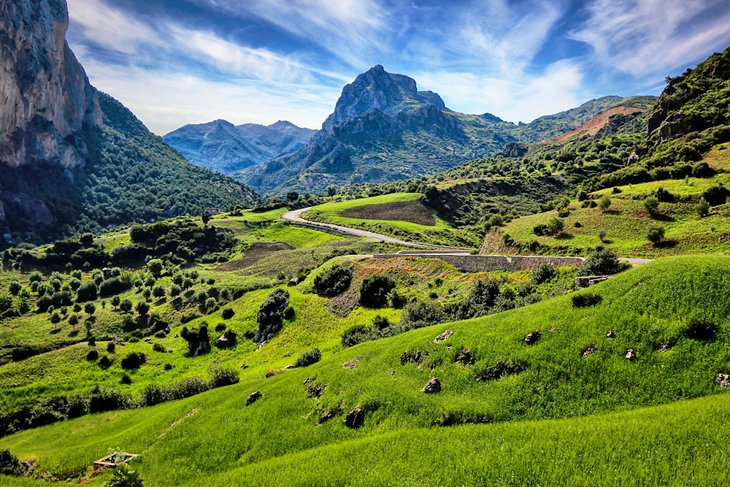
While much of Morocco's mountain scenery is craggy peaks surrounded by palm groves and arid plains, the Rif Mountains provide some lush green relief.
For hikers, bikers, and day walkers, this is a good opportunity to head out into nature with plenty of trails for both advanced trekkers and those just wanting a short easy walk.
Both Tetouan and Chefchaouen are the main bases from which to launch yourself out on a Rif Mountains adventure. Check out the trekking trails of Talassemtane National Park for its cedar and fir forest-covered mountain slopes and spectacular gorges and valleys to make the most of this region's natural beauty.
Draa Valley
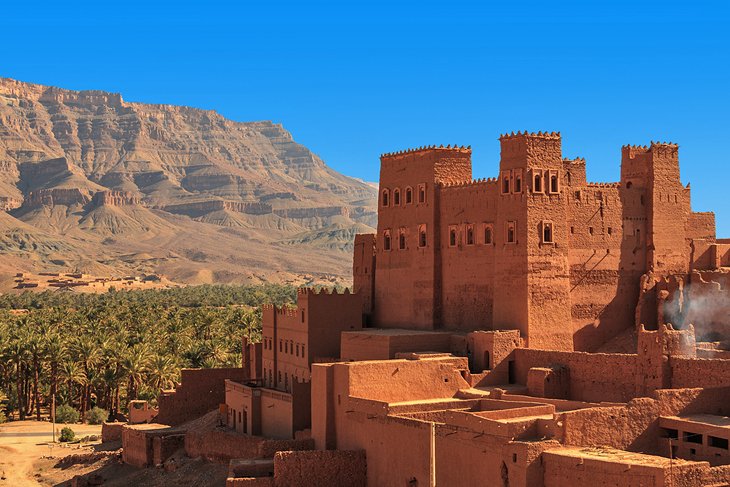
This valley, which connects the southeastern end of the High Atlas with the desert beyond, is prime territory for architecture and history fans.
All the way to the town of Zagora, the road is rimmed by palm tree oases and scattered with beautifully preserved kasbahs and ksour made from mud brick, which are fascinating to explore.
It's a great place for a road trip, stopping off at villages along the way to admire the view and delve into the shady, dimly lit passages of the kasbahs.
In particular, check out Kasbah des Caids in Tamnougalt, which has been used as a location in plenty of Hollywood films, and Timidarte village, where the village's ksar architecture has been finely restored.
Casablanca's Hassan II Mosque
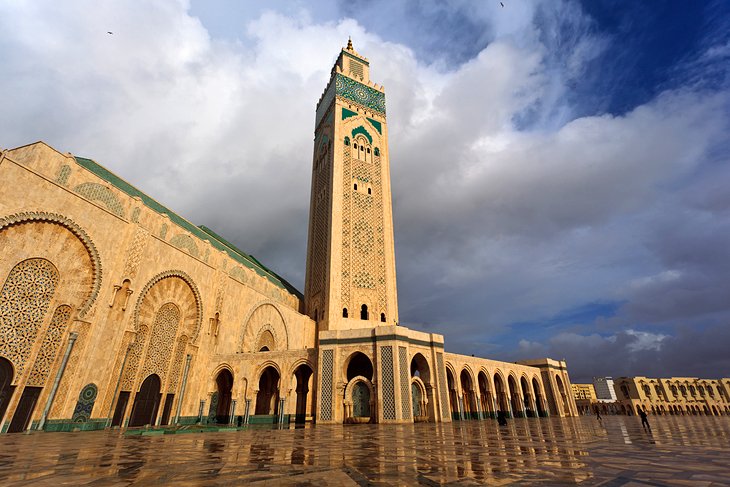
Casablanca's major point of interest and landmark building, the Hassan II Mosque is a lavish symbol not only of the city, but also of Morocco itself.
This modern mosque (finished in 1993) doesn't do things by halves. The decoration detail covering every centimeter of the mammoth two-hectare site took 10,000 artisans to complete.
Intricately carved marble pieces, vibrant mosaics, and zellige tile details all pay tribute to traditional Islamic architecture ideals and the mastery of Moroccan craftsmanship and yet, at the same time, still manage to feel contemporary.
This is the only mosque that non-Muslims can enter in Morocco. Free, informative tours are run by the mosque regularly.
Read More: Attractions & Things to Do in Casablanca
Rabat's Oudaias Kasbah
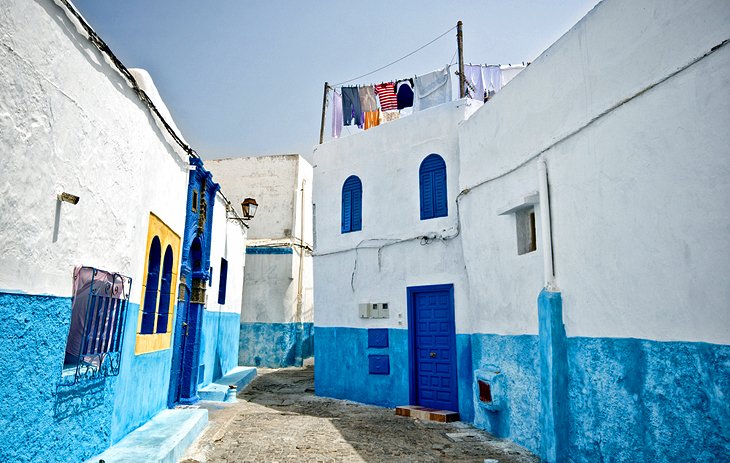
Morocco has plenty of beautiful old town areas, but Rabat's Oudaias Kasbah neighborhood has to be one of the country's most picturesque.
This is a peaceful and perfectly quaint district that feels miles away from the city, despite being right in the city's core.
Inside the walls of this old fortress, the lanes of neat white-and-blue houses rimmed by colorful flowerpots and flapping washing have a lost-in-time atmosphere that's hard to beat.
Even better, unlike the old town areas of Fes and Marrakesh, there are hardly any other tourists here, so exploring this pretty corner of the capital feels as if you've been let in on a well-kept secret.
Read More: Attractions & Things to Do in Rabat
Tangier
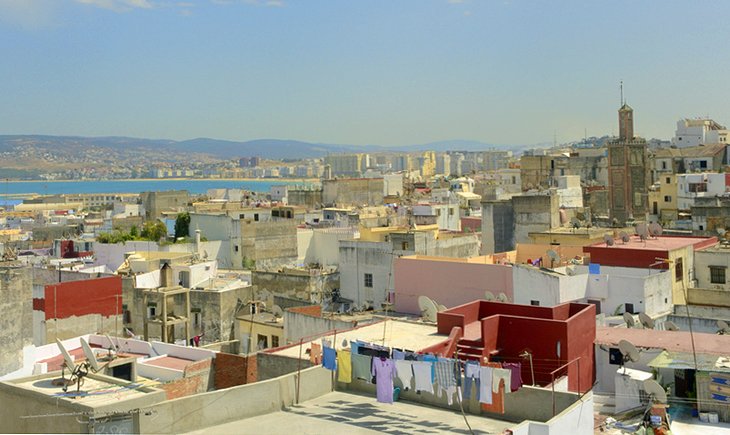
The most European of all Morocco's cities, Tangier is a major port city with regular ferry connections with Spain. This means it is often a traveler's first taste of Morocco.
Tangier has a fascinating and slightly debauched role in mid-20th century literary history, and this past is what draws many tourists here. This is the city that inspired famous works such as Paul Bowles' The Sheltering Sky and William Burroughs' Naked Lunch.
Tangier may have been scrubbed up since their day, with the bohemian cafés and louche bars long gone, but you can still catch a whiff of the decadent days gone by.
Read More: Attractions & Things to Do in Tangier


